Top 10 Highest Mountains in the World
Mountains are elevated regions of the earth's crust that rise sharply from the surrounding level and rise to great heights. Over 50% of the world's population lives in mountains, which make up 26.5% of the planet's land area. Most people are aware that Mount Everest in Nepal, which stands at 8,848 meters, is the highest mountain in the world, but how many of you are aware that the majority of the highest mountains are actually found in nations like India, Nepal, China, and Pakistan, which are located on the edges of the Eurasian and Indian tectonic plates. They are also a component of the Himalayan and Karakoram mountain ranges. Mountain glaciers store the majority of the world's freshwater and one-third of the terrestrial biodiversity.
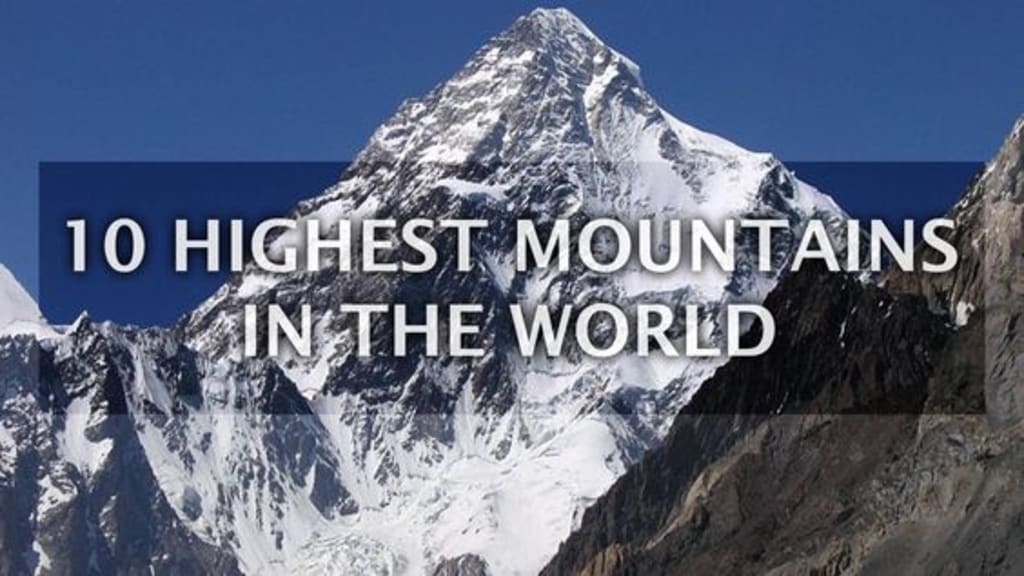
1. Mount Everest, 8,848.86 meters

With a height of 8,848.86m, it is both the tallest and most well-known peak in the world. The Himalayan mountain range's Mahalangur Himal subrange is where Mount Everest is located, straddling the borders of Nepal, Tibet, and the Autonomous Region of China. This peak is known as Chomolungma by the Tibetan natives and Zhumulangma Feng by the Chinese. Both the locals and the government of Nepal refer to this peak as Sagarmatha. The Khumbu Glacier, the Kangshung Glacier, the Rongbuk Glacier, and the Pumori Glacier are just a few of the numerous glaciers that can be found on this mountain's slopes. The Rong River, Lobujya River, and Kama River are just a few of the numerous rivers that flow from Mount Everest.
More than 5000 individuals attempt to summit the mountain each year due to it being the highest mountain peak in the world, which draws a large number of visitors and climbers from all over the world. On May 29, 1953, local Nepali Sherpas Tenzing Norgay and Sir Edmund Hilary of New Zealand made the first ascent. The walk from Everest Base Camp to the summit is the most well-known multi-day journey in the world. About 7600 people have succeeded in climbing this mountain since 1953, but about 300 have perished while doing so.
2. Mount K2 - 8,611m

With an elevation of 8,611 meters, Mount Godwin-Austen, also known as Chhogori or Mount K2, is the second-highest peak in the world. The Great Trigonometrical Survey of British India's notation was the source of the mountain's name. Mountaineers consider Mount K2 to be the most hazardous mountain to climb in the entire globe, hence the nickname "Savage Mountain." It is located in Gilgit Baltistan, a section of Pakistan-administrated Kashmir, and part of the Tashkurgan Tajik, an autonomous nation in western Xinjiang, China.
The Karakoram Mountain Range includes it. On July 31, 1954, the Italian climbers Achille Compagnoni and Lino Lacedelli became the first men to reach Mount K2's summit. With around 300 successful summits and 77 fatalities, this peak has the second-highest fatality rate per summit.
3. Mount Kanchenjunga - 8,598m

With an elevation of 8,598 meters, Mount Kangchenjunga is not only the third-highest mountain in the world but also the highest mountain in India. It is located in the Himal region of the Himalayan Mountain Range near the state of Sikkim's border with Nepal and India. Kangchenjunga has five main peaks, three of which are on the border between Nepal's eastern region and the Indian state of Sikkim. The other two peaks of the mountain are found in Nepal's Taplejung district.
Because humans at the time incorrectly estimated the heights of all the known mountains, this mountain was believed to be the highest mountain in the world until 1852. Mount Kangchenjunga has long been revered as "Sacred" by the residents of Sikkim and Darjeeling, a region in West Bengal. Many protected areas, including Neora Valley National Park in Darjeeling, Khangchendzonga National Park in Sikkim, and Kangchenjunga Conservation Area in Nepal, have been established to preserve and protect the special ecosystem of Kangchenjunga. On May 25, 1955, two English mountaineers named George Band and Joe Brown made the first ascent of this mountain.
4. Mount Lhotse - 8,516m
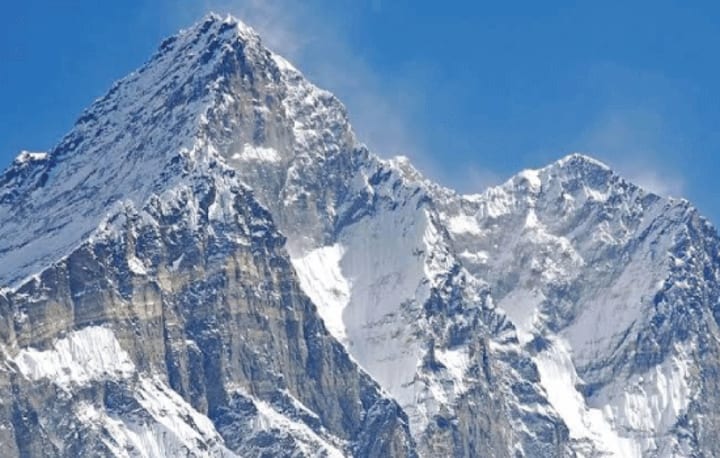
The world's fourth-highest peak rises to a height of 8,516 meters. It is situated in the Mahalangur Himal region of the Himalayan Mountain Range, straddling the border between Tibet Autonomous Region of China and the Khumbu region of Nepal. Through the jagged South Col, Mount Lhotse and Mount Everest are joined, and Lhotse also makes up a portion of Everest. It also includes the Lhotse Sar and Middle peaks, which are smaller and reach heights of 8,383 and 8,414 meters, respectively. Although Mount Lhotse is more visually appealing, it is much less crowded. On May 18, 1956, two Swiss mountaineers named Fritz Luchsinger and Ernst Reiss made climbing history.
5. Mount Makalu - 8,485m

The third of the four 8000-meter mountains in the Everest Massif, it is the fifth-highest mountain range in the world. In the Mahalangur Himal region of the Himalayan Mountain Range, Mount Makalu is situated along the border between Nepal and the Tibet Autonomous Region of China. This mountain's pyramidal peak has earned it considerable notoriety. Additionally, this mountain contains two subsidiary peaks, Makalu II or Kangchungtse and Chomo Lonzo, which are both 7,678 and 7,804 meters high. On May 15, 1955, two French mountaineers named Jean Couzy and Lionel Terray conquered this peak.
6. Mount Cho Oyu - 8,188m
The height of the sixth-highest mountain is 8,188 meters. It serves as the Himalayan Mountain Range's westernmost main peak in the Khumbu sub-part of the Mahalangur Himal section. It is located close to the border with China and Nepal. 20 kilometers west of Mount Everest is Mount Cho Oyu. Due to its gradual climbing grade, it is also regarded as the most accessible summit in the 8000-meter range. One of the main trade routes between Khumbu and Tibetan Sherpas, the Nangpa La pass, and Mount Cho Oyu are only a few kilometers apart. In October 1954, native Sherpa Pasang Dawa Lama and the two Austrian climbers Joseph Jöchler and Herbert Tichy made the first successful ascent.
7. Mount Dhaulagiri I - 8,167m
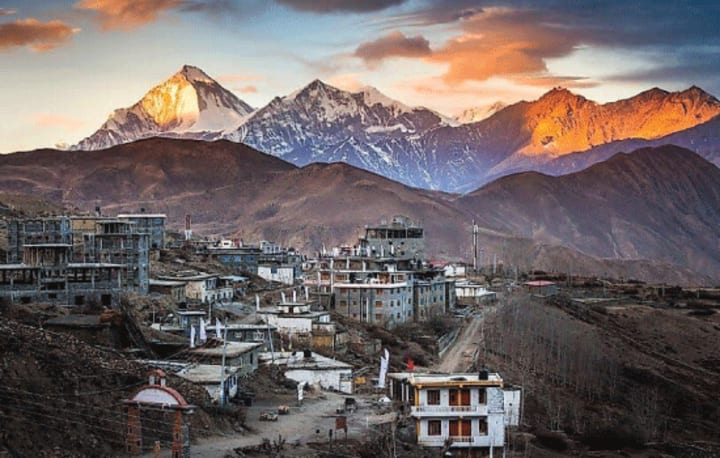
The seventh-highest peak in the world, Mount Dhaulagiri, is situated in Nepal and reaches an elevation of 8,167 meters. It is a beautiful mountain in every way. The Myagdi Khola river borders the Dhaulagiri mountain range in the southeast, and the Bheri River's tributaries border it in the southwest. The Kali Gandaki Gorge of the Kali Gandak River, one of the world's deepest canyons, divides the Annapurna Mountain from the Dhaulagiri Mountain in the east. A group of mountaineers from Austria and Switzerland, including Alvin Schelbert, Kurt Diemberger, Ernst Forrer, Peter Diener, and two Sherpas, Nyima Dorje and Nawang Dorje, were the first to summit Mount Dhaulagiri I. On May 13, 1960, all of them were successful in climbing it.
8. Mount Manaslu - 8,163m
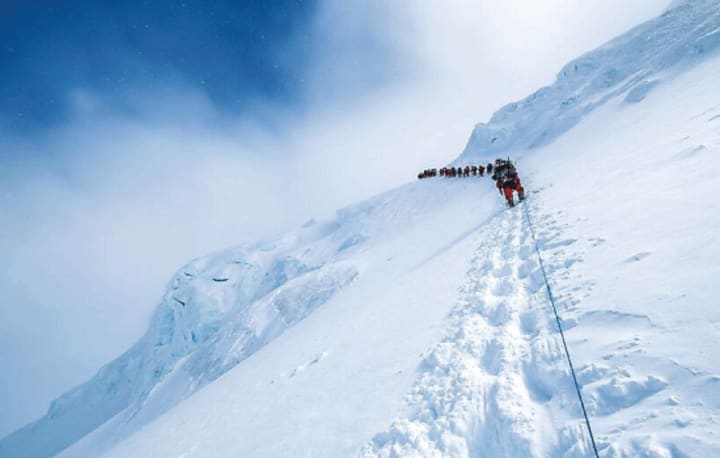
The 8,163-meter-high Mount Manaslu is the eighth-highest mountain in the world. It is situated in the Gorkha district of Nepal's Mansiri Himal subrange of the Himalayas. The Sanskrit term Manasa, which denotes the spirit or intellect, gave the peak its name, Manaslu. The mountain of spirit is mentioned. The neighborhood residents forbade a team from ascending because they thought that all prior attempts had angered the god, who then unleashed an avalanche that killed 18 people and completely destroyed a monastery. On May 9, 1956, a Japanese expedition team made the first ascent of this mountain. The team was led by Gyalzen Norbu and Toshio Imanishi.
9. Mount Nanga Parbat - 8,126m
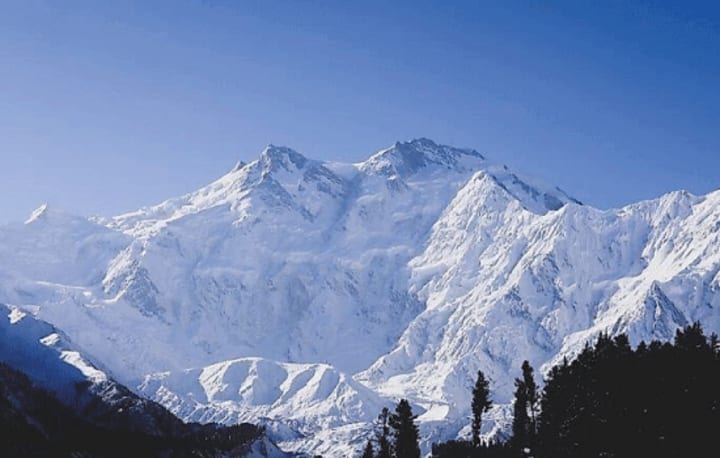
Mount Nanga Parbat, the ninth-highest peak in the world, is situated in Pakistan-occupied Kashmir's Gilgit-Baltistan area and rises to a height of 8,126 meters. This mountain is known locally as Diamer (the Tibetan name), which means enormous mountain. Sanskrit, which translates as "naked mountain," is where the term Nanga Parbat originated. This mountain serves as the westernmost summit of the Himalayan Mountain Range and is located south of the River Indus. The beautiful Rupal Face on the mountain climbs to 4,600m and is frequently referred to as the tallest mountain face in the world. Low-lying valleys surround the peak in all directions. On July 3, 1953, Hermann Buhl, an Austrian mountaineer, became the first person to ascend Mount Nanga Parbat.
10.Mount Annapurna I - 8,091m

It is the tenth-highest mountain in the world, rising 8,091 meters above sea level in Nepal. The Annapurna massif, located in Nepal's north-central region, contributes to the formation of the Himalayan Mountain Range. The tallest and most significant summit of the Annapurna massif is named Annapurna I. Due to the world-famous Annapurna trekking, it is one of the most well-known mountains on the list. Although it ranks tenth on the list, this peak has the greatest death rate of all the mountains mentioned above. This peak is extremely challenging to climb; 32% of attempts end in fatalities. French mountaineers Louis Lachenal and Maurice Herzog made the mountain's first successful ascent on June 3, 1950.
These ten mountains are among the tallest in the world and are a part of the Himalayan and Karakoram Mountain Ranges. These mountains are incredibly stunning and endowed with an exceptional biodiversity, which draws travelers from all over the world. However, climate change, increased temperatures, and global warming have a significant negative impact on the natural beauty of these mountains.
About the Creator
indika sampath
hello world
my name is indika sampath so I'm a article writer. you also can learn by reading somethings that important things.
thank you so much for visiting my profile






Comments
There are no comments for this story
Be the first to respond and start the conversation.